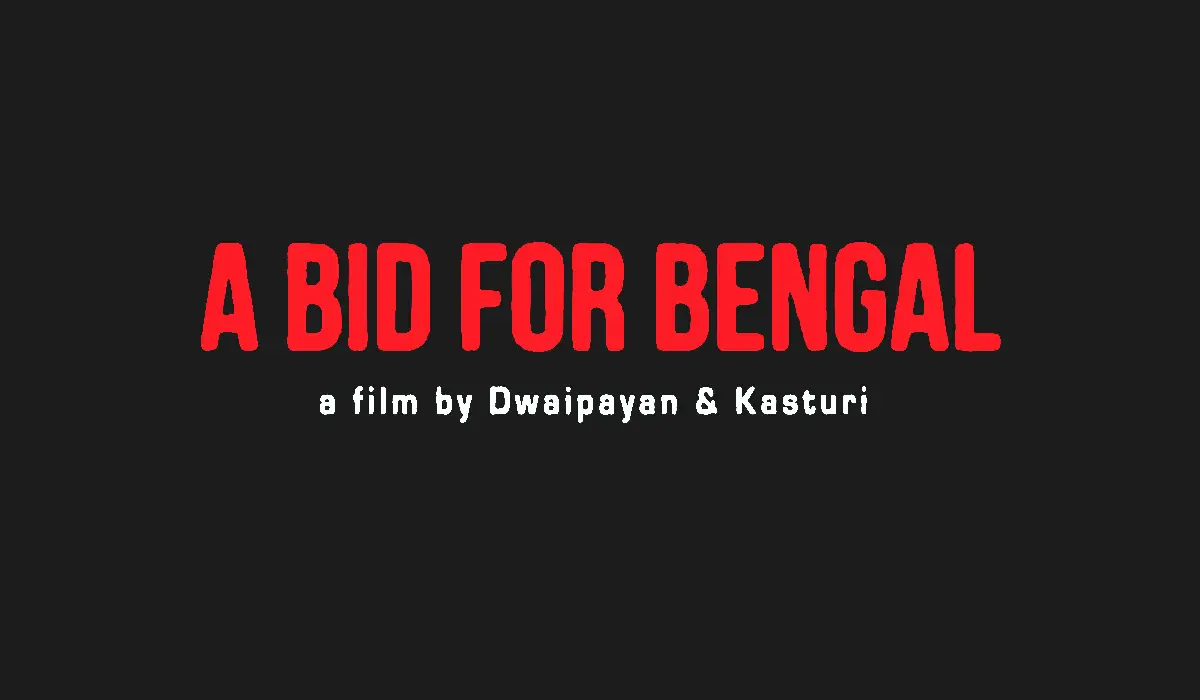
A Bid for Bengal is a documentary film directed by the Bengali documentary filmmakers Dwaipayan Banerjee & Kasturi Basu that depicts how the rise of Hindu Nationalism and communal polarisation took place in a land that was under strong communist rule over three decades. The film is narrated in a chronological structure where the history of Hindi National politics in Bengal is portrayed from its beginning past to the current era. The makers had made use of personal experiences and their family history to showcase how the Hindu Nationalist politics had grown as a parasite on the Bengali lives.
Bengal had faced a religious partition in 1947 that gave birth to West Bengal and Bangladesh. Therefore Bengal became a land that was equally shared by both Hindus and Muslims. Even after these many years since the partition, these two majority communities are still in conflict with one another making the minorities of the land more vulnerable to religious riots. After the BJP government came into power in the union, the Hindutva organisations had made the religious turmoil even more worse, filling the state with communal violence. The film is set in the backdrop of such a scenario.
The movie begins with the portrayal of Bengal as a city of processions, where an excerpt of Louis Malle’s documentary Calcutta is shown, in which a procession of the religious party Shantan Dal takes place. Also, another rally of Leninists who consider Lenin as a deity is shown along. It rapidly changes to a present Bengal where people wearing saffron celebrates the “Jai Sri Ram” chants and slogans all along the streets. Such a portrayal of saffron clothing and religious slogans are captured all throughout the movie to tell us about the dangerous communalism that had swallowed up the state. The directors are easily able to tell the audience about the transformation of Bengal politics with the help of 3 different rally shots placed together.
The documentary is divided into 3 parts. The first titled ‘The Home and The World’ tells us about Bengal’s political past. It starts with a few montage stills of the directors who are in discussion of the past and from where the past should begin. They ultimately find out the answer is “home”. Dwaipayan engages the next scenes with the experiences of his father who was a leader of the RSS in Bengal and how he turned a Gandhian for life after the assassination of Gandhi by the Hindu Nationalists. This part is also filled with early black-and-white footages of pre independent India and its struggle for independence. Also, various footages of Bengal’s past political revolutions are included to give the audience a clear cut understanding of how Hindu Nationalism was trying to project its traces back then. The flawless editing techniques used in this part help the viewers take a linear journey through the Bengal history.
The next part titled ‘Scorching Winds’ explores the era of the first Modi Government. The frames are filled with more saffron hues and shades where the freedom fighters of the past and their ideas are just seen in the torn posters and banners in the streets. The camera work done in this part is really much to be appreciated as it has rawly captured the lives amidst the riots that were often sprouting out in Bengal. The BJP rallies and the anti-BJP protests were adventurously captured amidst the big chaos. The new practices of the state shoot out by the new union government are narrated as fresh shocking events. The cow protection cells, Hindu radicalization camps, the processions during Ram Navami, the BJP IT cells, etc are covered in the frames and narrated with absolute fear and disgust showing how India was turning into a religious dictatorship.
The final part titled ‘Unvanquished’ is set post 2019 union elections and also pictures the life during pandemic. The Citizens Amendment Act and the Farmers protests too comes under discussion. Here too the directors captures the raw life under such holocausts without any hesitation. The antifascist protests against BJP by the people including the narrator’s are shown as it is. They are unvanquished, as like the title suggests, when the BJP lose their vote percentage in Bengal after their failure to Trinamul Congress in the state elections. Even though it was a triumph over the religious radicals the frames are still shown in dull shades denoting it was just a temporary relief.
The makers had worked for the documentary over three years capturing the political atmosphere after the prominent rise of Hindu Nationalism in Bengal. The streets, the local livelihoods, the monuments, the party offices, procession and rallies were all that are projected throughout the 70 minutes long documentary. The dull lighting in most of the shots has emphasized the gloomy situation of the current Bengal. Symbols of Hindu Gods and their slogans that covered up the whole of the city was focused on every time so that to show how they’ve turned a secular state into a religious hub. Even though the film doesn’t rely upon a wide variety of shots and angles, we are still able to experience the rawness of political testimonies in the screen. The slow paced melancholic music too enhances the internal conflicts and thirst for liberation of the locals in Bengal. Overall we can remark the documentary as a sincere long time effort to showcase the City of Joy that has lost its bliss to communalists, and their final hopes to revive their lost days of harmony and peace. The makers can be proud of their successful attempt in portraying truth.